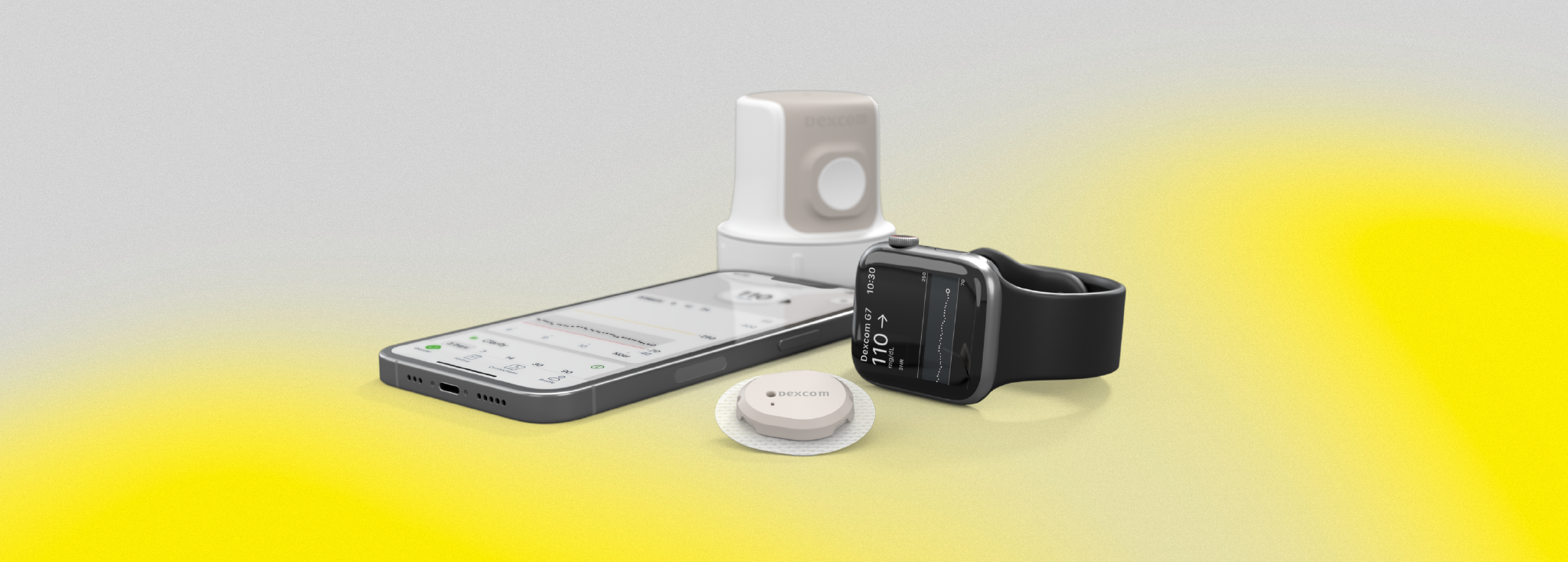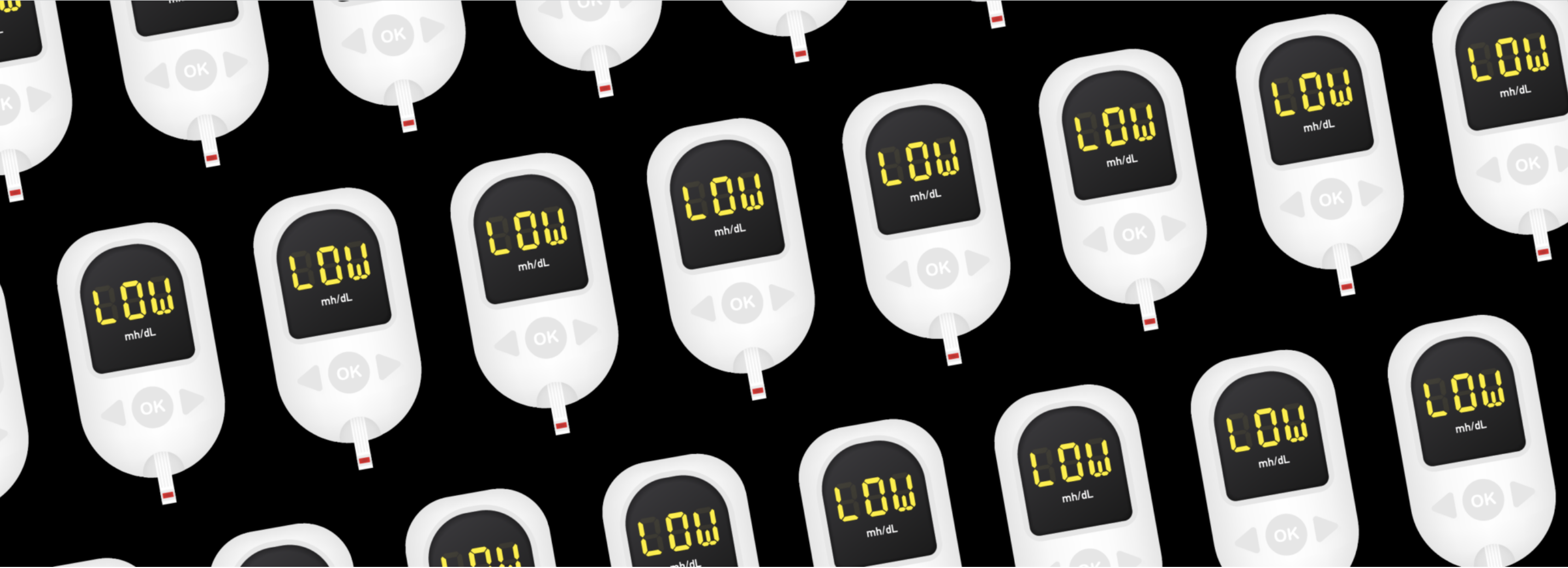Insulin Pens vs. Insulin Pumps for Type 2 Diabetes
Written by: Ginger Vieira
5 minute read
February 1, 2022
Using insulin to manage type 2 diabetes comes with options! Here are the pros and cons of insulin pens vs. pumps.
When it comes to taking your insulin, we’re lucky to have several options today! In fact, there are more and more options hitting the market specifically designed with type 2 diabetes in mind.
If you’re curious about the pros and cons of using an insulin pen versus a pump, here are a few details to consider.
(By the way, making the switch from pens to a pump should be done with careful support from your healthcare team.)
Using an Insulin Pen
Here are a few of the pros and cons of using an insulin pen compared to a pump.
Pros
- Pens are more affordable than insulin pumps because you’re paying for fewer supplies and simpler technology.
- Pens are quite simply more simple than a pump. They don’t require as much learning or regular infusion site changes or complex programming.
- You’ll always get the insulin you intended to take. It’s extremely unlikely that your pen will fail to deliver your insulin properly. Pump users, on the other hand, will likely experience various technical issues at least a few times a year because the physical set-up in your skin and the technology is more complicated, thus more issues can arise.
- Insulin pens can be “smart.” More than just a vial with a fancy needle, many of today’s insulin pens can use technology that helps you track your insulin dosages, track how much insulin you have “on board” in your system during the hours after dosing, use its connected app to help you estimate doses based on carbohydrate-intake, enter your blood sugar levels and more. Learn more about smart pens!
- Physical freedom! Unlike a pump, an insulin pen isn’t attached to you all the time. This means fewer skin irritation issues, more physical comfort and more discretion.
- They’re really easy to carry with you and don’t require a great deal of back-up supplies whether you’re headed to work or traveling. Just pack the pens, pen needles, your smart phone and a few alcohol swabs, of course.
- Fewer skin issues. While the injection from a smart pen isn’t a lovely experience for your skin, it comes with far fewer risks or issues than an insulin pump infusion site.
Cons
- More simplicity can mean less power. If you need basal (background) insulin, your only option with pens is to take one or two large doses at specific times of day and hope they match with your body’s needs throughout the day.
- More thinking. Pumps do a lot of the thinking for you with calculating meal doses, correction doses and it’ll never “forget” to deliver your basal insulin.
- Injections! If you hate being poked a lot with needles, pens are going to force you to face that experience multiple times a day.
- Less flexibility with background insulin needs. Once you inject your long-acting insulin dose, there’s no changing it until your next dose. That means you can’t “suspend” insulin delivery for an hour or two during exercise or increase the background insulin dose quickly either.
- Less flexibility with mealtime insulin needs. With a pump, you can program the meal bolus to deliver some now, some later—which is especially helpful for high-fat/high-protein meals that digest very slowly. Achieving this with an insulin pen means taking multiple injections specific hours apart for one meal. That can be a lot to remember!
- Easier to forget. Many people report having an easier time remembering to take their insulin when they’re wearing a pump—because it’s right there on your body all the time.
Using an Insulin Pump
Here are a few of the pros and cons of using an insulin pump compared to a pen.
Pros
- Basal or bolus insulin dosing options! Some insulin pumps can deliver both basal (background) insulin and bolus (mealtime) insulin. Depending on your personal needs, you can choose which type of pump you need.
- You can set very precise and specific basal rates customized to your body’s hour-by-hour needs. If your body needs significantly more background insulin in the morning, for example, compared to the evening, the pump makes it easy to get the amount of basal insulin you need when you need it.
- Some pumps come with automatic insulin dose calculations. When you program the pump with your personal dosing needs for correcting highs or covering the carbohydrates in a meal, the pump does all of the math for you!
- “Patch” pumps come with simpler dosing by pressing a button for a certain number of units at a time. If you want 10 units, you might press the button five times, discreetly dosing your insulin without ever taking an injection.
- Some pumps offer flexibility with the timing of your mealtime dose “extended” or “square” boluses that help you cover your insulin needs for high-fat/high-carb meals that might digest more slowly. An “extended” bolus means the meal dose is delivered over the course of an hour—or several—instead of all at once. A “square-wave” bolus means the dose is delivered in two parts: some right away, and some over the course of several hours like an extended bolus. This eliminates the need for follow-up doses in the hours after that meal.
- Many people find it’s significantly easier to stay in their goal blood sugar range, with fewer low blood sugars, throughout the day on a pump compared to daily injections. Pumps can make it easier to manage around variables like exercise, menstrual cycles and stress, too, because of the ability to make sudden changes in your basal rates.
- Harder to forget! It’s much harder to forget about taking your mealtime insulin dose when you’re wearing a gadget in your skin that delivers insulin.
Cons
- Yup, more expensive. Insulin pumps are inevitably more expensive than pens, because the technology is more complicated and more supplies are required.
- Frequent site-changes. Today’s insulin pumps need to be completely changed and placed on a new area of the body every one, two, or three days depending on which type of pump you use. You cannot simply put off changing the pump site because you’ll potentially run out of insulin, increase your risk of infection, or the pump will automatically shut down after a certain number of hours.
- It’s more visible. While the actual process of dosing is more discreet than taking injections, the actual pump sitting on your body is more visible to those around you.
- It’s gotta be on your body 24/7. Aside from removing it for showers and potential other activities, you need to wear your insulin pump 24 hours a day to get your insulin!
- Site failures! Infusion site failures come with the territory of using an insulin pump—whether it’s from a kink in the cannula (the part sitting in your skin) or it falls off, or there’s skin irritation. For some people, these issues might be rare, for others it might feel more frequent. It can be tedious, frustrating and potentially scary.
- Supplies supplies supplies. Using an insulin pump means always having the right supplies with you—and keeping back-up supplies with you whenever you leave the house, are traveling, etc.
- More skin woes. It’s inevitable that a device pushing insulin into your skin in the same location for a day or three is going to cause more damage and scar tissue compared to injections. You’re also at a higher risk of developing an infection or experiencing skin irritation at an infusion site.
If you’re able to, we recommend giving both a try! You might have some assumptions about using an insulin pump that keep you from giving it a try—and you might end up loving it. If you’ve used an insulin pump for a number of years, you might also need a break by going back to pens.
Fortunately, we have options. Talk to your healthcare team about today’s different insulin pump and pen options!
This content on diabetes management was made possible with support from Lilly Diabetes. Beyond Type 2 maintains full editorial control of all content published on our platforms.

Author
Ginger Vieira
Ginger Vieira is an author and writer living with type 1 diabetes, celiac disease, fibromyalgia and hypothyroidism. She’s authored a variety of books, including “When I Go Low” (for kids), “Pregnancy with Type 1 Diabetes,” and “Dealing with Diabetes Burnout.” Before joining Beyond Type 1, Ginger spent the last 15 years writing for Diabetes Mine, Healthline, T1D Exchange, Diabetes Strong and more! In her free time, she is jumping rope, scootering with her daughters or walking with her handsome fella and their dog.
Related Resources

The biggest barbecue day of the year is the 4th of July! Celebrating the 4th...
Read more

Continuous glucose monitors (CGMs) have completely changed the way diabetes is managed. For example, CGMs:...
Read more

Hypoglycemia and severe hypoglycemia are two things against which all people with diabetes should be...
Read more

